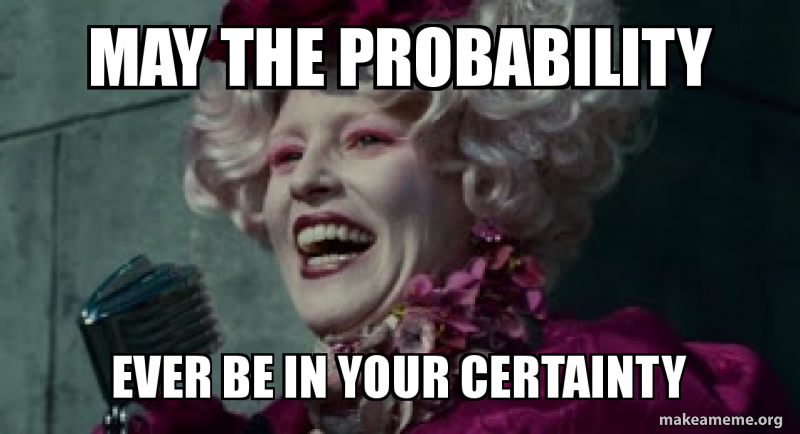Kanya Shah
A
Aly Moosa
AP Statistics 📊
265 resourcesSee Units
The main concepts you need to grasp from this section are the basics of probability and the complement rule. Make sure you understand these key ideas 🔐!
A probability model is a description of some chance process that is made up of two portions: a list of all possible outcomes and the probability for each outcome. The list of all possible outcomes is called a sample space.
📝Basic Probability Rules
- If all outcomes in a sample space are equally likely, the probability that event A occurs is...
- P(A) = number of outcomes in event A/ total number of outcomes in the sample space.
- The probability of any event is a number between 0 and 1 (proportion).
- All possible outcomes MUST add up to 1.
- The probability that an event does not occur is 1 minus the probability that it does occur. In other words, this refers to the complement rule which says that P(AC) = 1- P(A) where P(AC) is the complement of event A or the probability that event A doesn’t occur. (*Understand how to solve problems using this rule given a scenario mentioning “at least one.”)
Be sure to know how to interpret the probability you calculate. Remember to use context.
🎥Watch: AP Stats - Probability Rules and Random Variables

Courtesy of Make-a-Meme
Browse Study Guides By Unit
👆Unit 1 – Exploring One-Variable Data
✌️Unit 2 – Exploring Two-Variable Data
🔎Unit 3 – Collecting Data
🎲Unit 4 – Probability, Random Variables, & Probability Distributions
📊Unit 5 – Sampling Distributions
⚖️Unit 6 – Proportions
😼Unit 7 – Means
✳️Unit 8 – Chi-Squares
📈Unit 9 – Slopes
✏️Frequently Asked Questions
✍️Free Response Questions (FRQs)
📆Big Reviews: Finals & Exam Prep

Fiveable
Resources
© 2023 Fiveable Inc. All rights reserved.